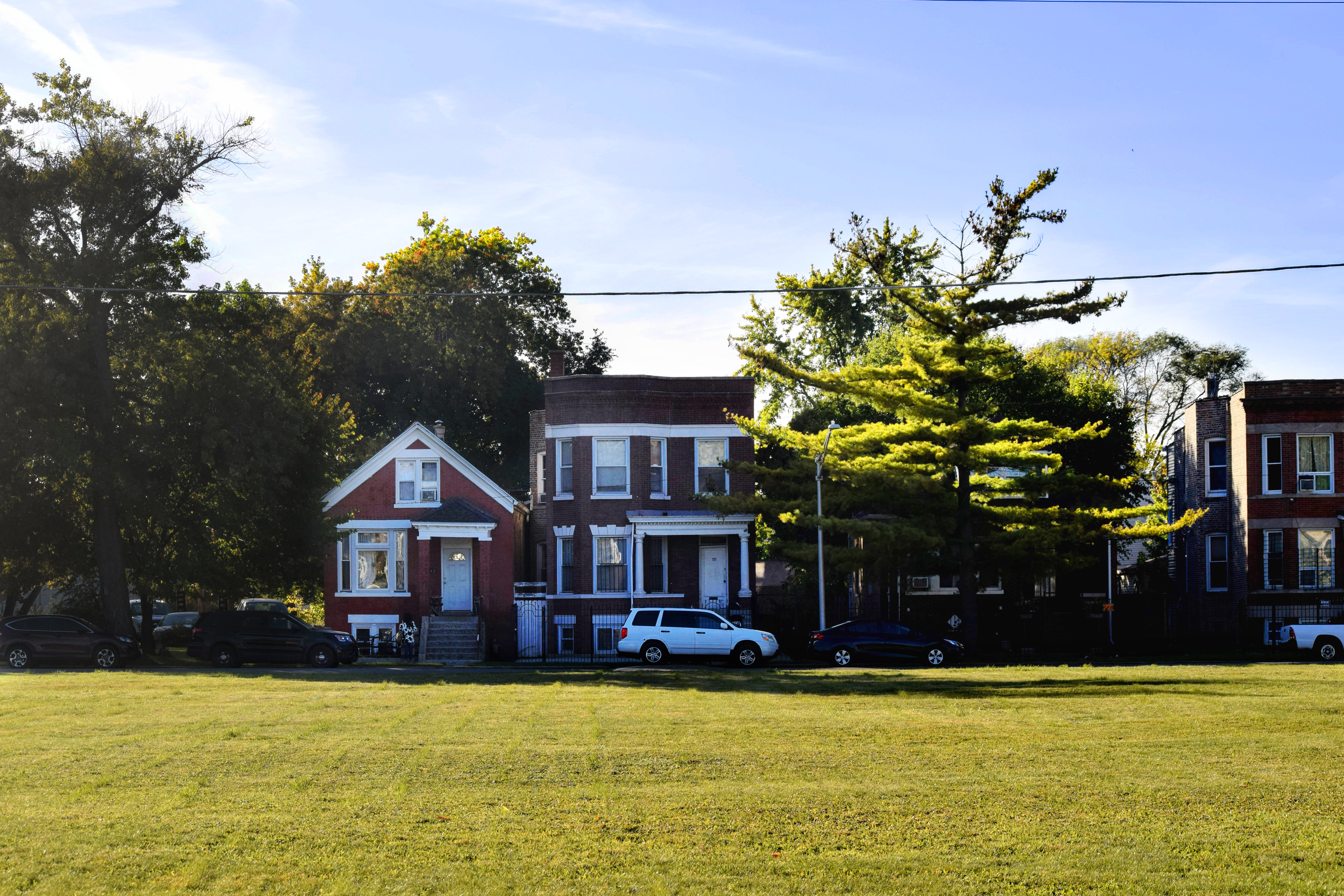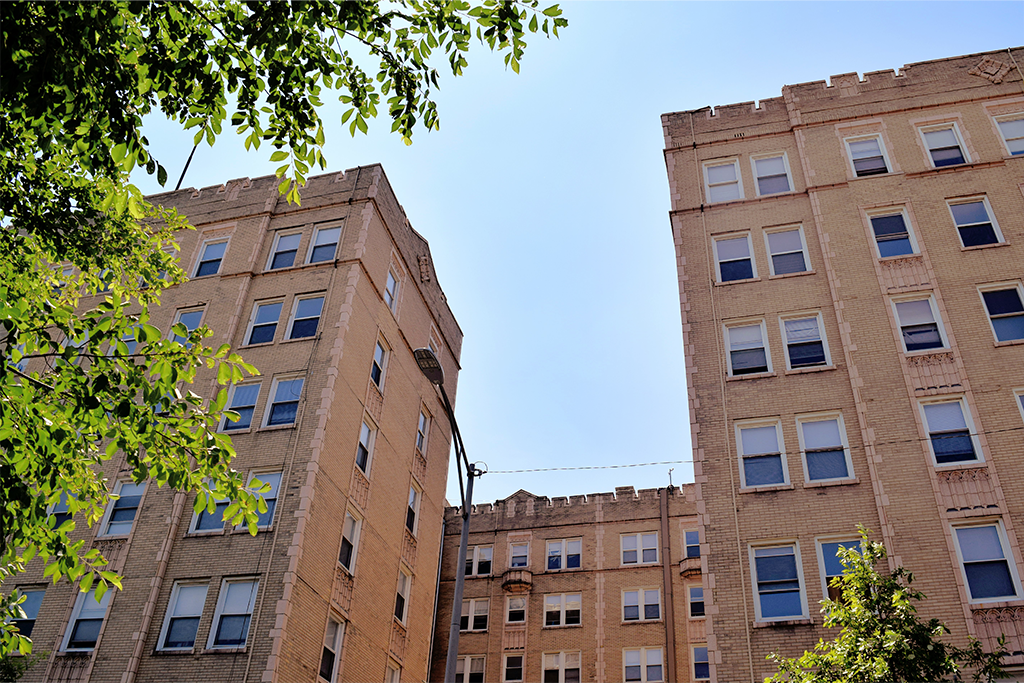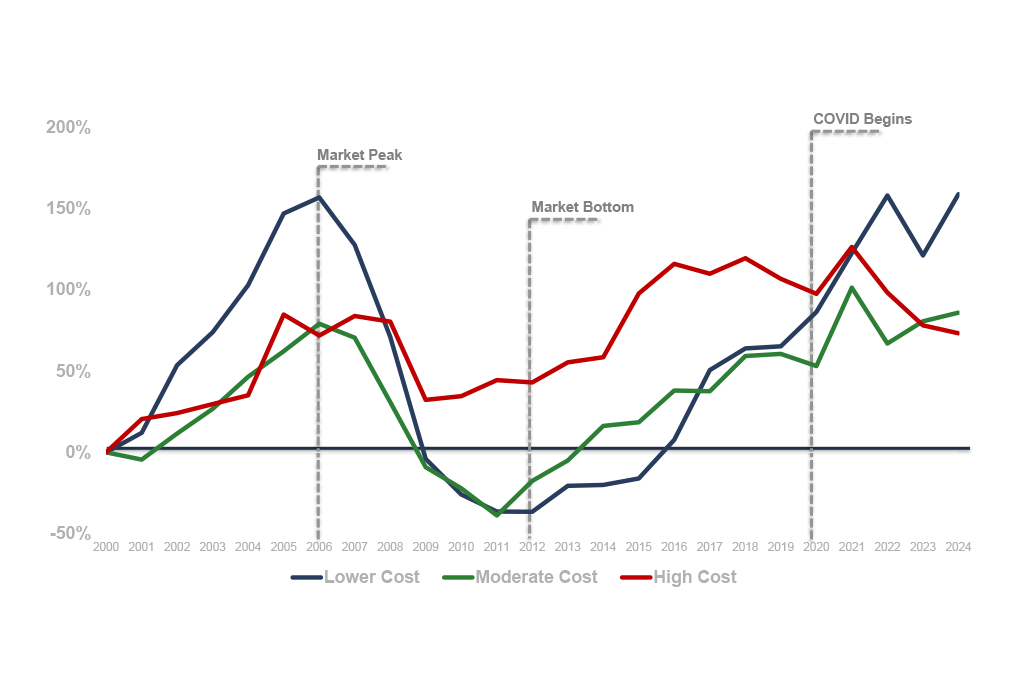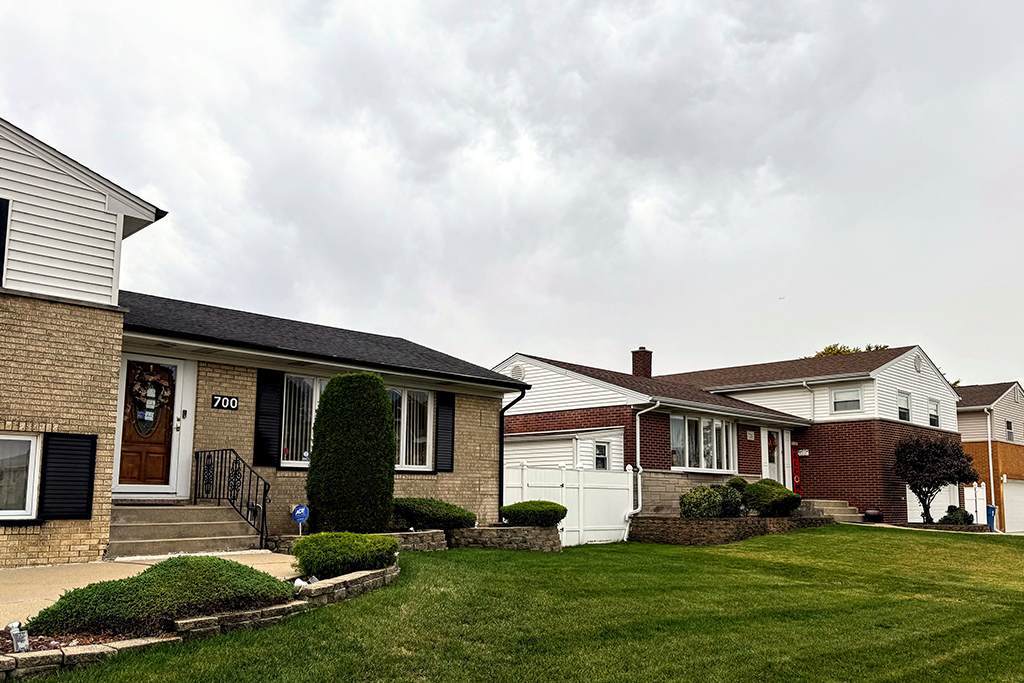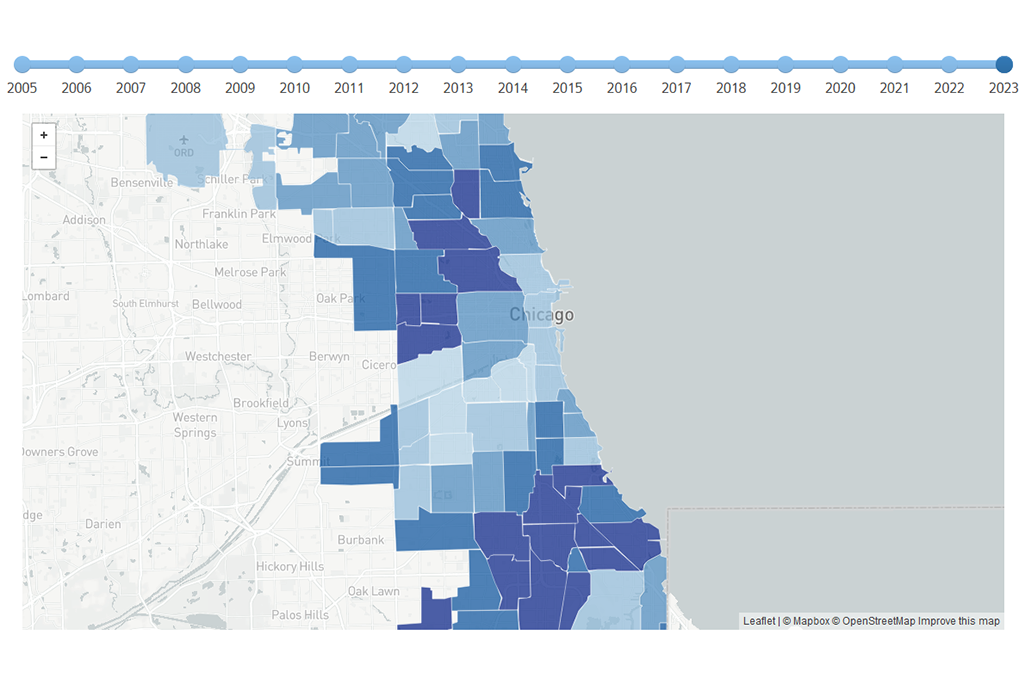Photo: Evelyn Ryan
IHS TA Program
IHS’s mission is to provide reliable, impartial, and timely data and research to inform policy decisions and discussions regarding the state of housing in the Chicago region and nationally. One of the ways IHS accomplishes this mission is through data support, technical assistance, and engagement with community groups working on housing- and community investment-related topics. This is part of a series of blogs showcasing our collaborations with local groups who are working to improve their communities.
Vacant Land in Chicago
There are over 40,000 vacant lots throughout Chicago. The majority of these lots are found in predominantly Black neighborhoods on the South and West sides, largely due to long-term discrimination and disinvestment from public and private entities. Neighborhoods without investment struggle to maintain housing demand, which can lead to population loss, property demolition and deterioration, and eventually, abundant vacant land.
A large concentration of vacant land can have negative effects on the mental and physical health of residents. Vacant land can also depress nearby property values and correlate to increased crime, leading to further disinvestment. Therefore, undeveloped lots can perpetuate and deepen disinvestment in a neighborhood, and concentrated vacancy can present a headwind for efforts to bring about broader community revitalization.
However, despite these challenges, this combination of plentiful open land and unmet community needs can pose a clear opportunity for equitable investment, but lenders historically invest less in these neighborhoods than in other parts of the city. In addition, many of these lots are owned by private speculators. These owners keep their lots undeveloped, hoping that land values will appreciate and the still-vacant land can be sold for a profit. Many of these owners don’t live in the communities, and often don’t maintain their properties.
Vacant lots are not the only example of land with the potential for revitalization in Chicago neighborhoods; Chicago has a large quantity of disused rail infrastructure, including disused freight tracks. The City's most prominent example of the repurposing of freight tracks is The 606, a bike and pedestrian path that was once an unused elevated rail structure. The 606 was hugely successful in bringing new investment to its immediate surroundings. However, the resulting increase in housing costs and displacement pressure underscores the need to account for neighborhood market conditions and to implement affordable housing measures before introducing catalytic projects into communities, factors that are informing discussions around creating similar elevated trails in Bronzeville, North Lawndale, and Englewood.
Additionally, in at least one example, disused rail infrastructure could be returned to regular use. In Englewood, the former Racine Green Line station has sat empty for decades. The station, located at the intersection of Racine and 63rd, was closed during the line’s reconstruction in the 1990s and wasn’t reopened. Reopening the station has broad community support. In 2023, an advisory ballot initiative asked the question of whether the CTA should reopen the Racine station: 93 percent of 16th Ward residents voted in favor of restoring service.
Community Solutions
As part of our mission of community engagement, IHS has provided technical assistance and data support to numerous community organizations working to address the long-term impacts of disinvestment by repurposing vacant land into productive uses and valuable community assets.
Reclaiming Chicago is an initiative led by United Power for Action and Justice that plans to build over 2,000 new homes on vacant land throughout the South and West Sides. The initiative has been active since 2021 and has so far completed 80 homes as part of the project's first phase. Reclaiming Chicago also has hundreds more homes in the planning or construction phases in neighborhoods such as Back of the Yards, Chicago Lawn, North Lawndale, and Roseland. These new homes not only provide stable housing for community residents, but can also attract new families to neighborhoods that have experienced decades of population loss.
To support Reclaiming Chicago’s efforts, IHS has provided the campaign with detailed maps of vacant land in target neighborhoods. These maps portray Reclaiming Chicago’s completed and under-construction homes, while contextualizing them with other potentially developable lots and neighborhood amenities such as schools and libraries. The maps provide a comprehensive overview of open land and its potential, which informs Reclaiming Chicago’s acquisition strategies.
Figure 1. Map of Reclaiming Chicago Parcels, Vacant Land, and Community Amenities in Back of the Yards
In the South Side neighborhood of Englewood, a vibrant community of organizations and activists has been fighting to improve local outcomes for decades. One local nonprofit is Teamwork Englewood, whose mission is to improve the quality of life of residents by facilitating economic, educational, and social opportunities. One of Teamwork Englewood’s biggest projects is the Quality of Life Initiative, which builds community capacity through collaboration with residents and stakeholders.
A key part of this work includes addressing the issue of vacant land in the community with a focus on improving environmental conditions, promoting economic development, and transforming neglected spaces into community assets. Under the stewardship of Grow Greater Englewood, the Quality of Life plan has matured into the Englewood Agro-Eco District, a first-of-its-kind plan to transform vacant lots into an urban agricultural zone. Additionally, the Englewood Nature Trail would repurpose a vacated rail corridor into a network of farms, which would foster local food access, community health and wellness, and business and job development.
IHS has supported Teamwork Englewood’s plans by providing data on broad housing market and economic conditions. In addition, we produced detailed data mapping the neighborhood’s privately owned vacant land, helping stakeholders visualize the amount of nearby vacant land and locate opportunities for community development. We have also provided data on who owns these properties, including tracking the vast holdings of a single private owner, for further strategic planning. IHS deputy director Sarah Duda also serves on the Quality of Life Initiative’s Housing and Public Space advisory council.
Another priority for Teamwork Englewood is to reopen the shuttered Racine Green Line stop. The campaign is led by a coalition of community groups called Go Green on Racine, which includes Teamwork Englewood, the Inner-City Muslim Action Network, E.G. Woode, and the Resident Association of Greater Englewood. Go Green on Racine has focused on various revitalization efforts along the 63rd Street corridor, including opening a grocery store in 2022. To support these endeavors, IHS provided data and maps on vacant land in the vicinity of the Racine stop.
Figure 2. Map of City- and Privately-Owned Vacant Lots and CTA Stations in Englewood
Elevated Chicago, a citywide collaborative that promotes equitable transit-oriented development, has published research on ways that vacant lots could be developed to meet community needs. These methods include developing vacant land to fill shortages in housing, grocery stores, and community spaces. In early 2024, Elevated led a collaborative project with Rudd Resources, Garfield Park Community Council, the Endeleo Institute, and IHS. The project examined the impact of vacant lots near CTA train stations on the South and West Sides, as well as their potential for equitable development. The resulting report used two neighborhoods as case studies: East Garfield Park on the West Side and Roseland/Washington Heights on the South Side.
As part of this research, IHS developed an in-depth analysis of City- and privately-owned vacant land near CTA train stations across the city. The analysis was then used to inform community conversations and community-led data gathering regarding the lots and their potential reuses.
IHS provides technical assistance and custom analysis on affordable housing issues and the changing dynamics of neighborhood housing markets to a wide range of practitioners, including community-based organizations, government agencies, and policymakers. If you think we can be of help to your organization, please contact Sarah Duda at sduda1@depaul.edu.
